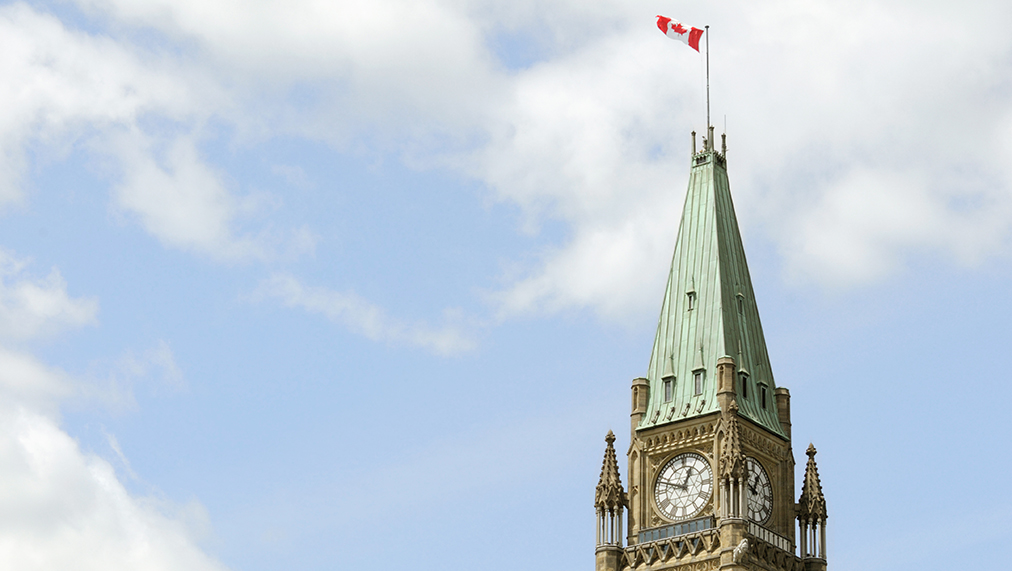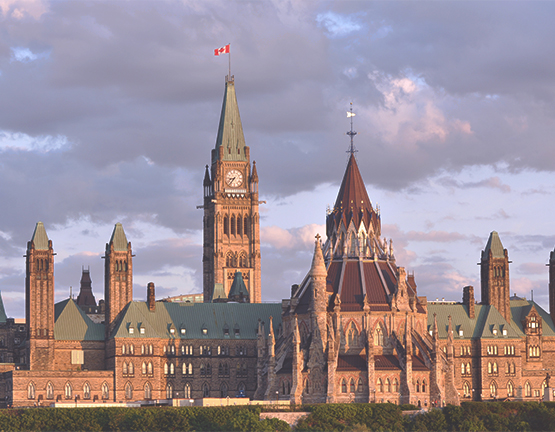Two whole years have slipped by since we last saw a budget from the federal government. We lost nothing by waiting, apparently: the document tabled by Finance Minister Chrystia Freeland on April 19 is a brick of 739 pages containing some 270 measures, initiatives and programs. If the thought of reading through the whole thing is only moderately appealing to you, here are seven key ideas to take away.
1. Gradual return to pre-pandemic deficit levels
First, the number we’ve all been waiting for: $354.2 billion. That is the size of the dent that the pandemic put in Canada’s public finances for fiscal 2020-2021. This deficit is almost ten times higher than the previous year’s. However, the government is planning to cut it by more than half for this year, when it should be around $155 billion. We will have to wait until 2024-2025 to see the budgetary balance return to its pre-pandemic level.
2. Businesses: assistance until next fall
If you run a small or medium-sized business and have been feeling the economic impact of the crisis, you may want to note that the budget extends the existing subsidy programs for your sector, specifically the Canada Emergency Wage subsidy (CEWS), the Canada Emergency Rent Subsidy and the lockdown support for businesses. However, starting July 4 these subsidies will gradually diminish, with the aim of progressively eliminating them as vaccinations become more widespread and the economic recovery takes hold. As well, the government announced that eligibility for the Canada Emergency Business Account (CEBA), an interest-free loan of up to $60,000, has been extended to June 30, 2021.
3. A new hiring incentive
In addition to these existing programs, a new incentive has been created to stimulate the hiring of new employees: the Canada Recovery Hiring Program. Under this measure, employers who continue to experience eligible declines in revenues relative to before the pandemic could be subsidized for up to 50% of the compensation paid to eligible employees. Be aware, however, that the eligibility period is only from June 6 to November 20, 2021, and employers will have to choose between this new program and the CEWS. It would also be in their interest to start hiring as early as possible, since the rates will gradually drop over time. As well, it should be noted that to promote the transition back to work for people affected by the pandemic, the government has provided for a number of temporary changes to its employment insurance programs.
4. $10-a-day child care
People across Canada could soon have access to a low-cost national public child care program, similar to the one already available in Quebec. The government plans to put $8.3 billion per year into a Canada-wide system to be administered by the provinces. Ottawa is proposing to pay about 50% of the public cost of daycares; the other half would be paid by the provinces. If this program is established, it could increase women’s participation in the workforce and allow them to participate fully in the anticipated years of economic growth ahead.
5. Some “luxury” taxes
Some analysts feared that the government would resort to new taxes on high-income or wealthy taxpayers to eliminate its record-setting deficits and the associated burden on public debt. Apparently, the government didn’t feel that was necessary – at least, not this year. On the other hand, as of January 1, 2022, if you acquire certain so-called luxury products, such as a car or aircraft for personal use worth more than $100,000 or a boat worth more than $250,000, you will now have to pay a new tax. This will be the lesser of 10% of the total cost or 20% of the cost above the threshold ($100,000 or $250,000). Note that this tax will only apply to new vehicles, and some types, such as motorcycles, race cars and recreational vehicles (RVs), may be exempt. Sales tax will be calculated on top of the proposed new tax. As well, an additional 16% excise duty will now apply to tobacco products, increasing the cost of a carton of cigarettes by four dollars. Vaping products will also be affected.
6. Recovery measures
The government is planning a total of $100 billion in programs over the next three years to “heal the economic wounds” inflicted by the pandemic. These include several aimed at supporting innovative companies. In particular, specific measures are set out to promote a “green” recovery. For example, companies manufacturing zero-emission technologies could benefit from a 50% cut in their tax rate over 10 years, while incentives are also provided for households wishing to renovate to improve energy efficiency. Moreover, if you work in tourism, the arts, entertainment or recreation, be aware that there are significant measures affecting these sectors, notably $300 million over two years to allow Canadian Heritage to establish a recovery fund.
7. Support for seniors
Finally, among the very many measures included in this budget, take note of a couple of improvements to Old Age Security (OAS). If you are age 75 or older (as of June 2022) and receive OAS benefits, the government will send you a one-time payment of $500 in August 2021. As well, a bill will be tabled to boost regular OAS payments by 10% for pensioners who are 75 or older as of July 2022. This increase will subsequently be indexed to inflation. It will amount to $766 more per year for those affected.
This brief summary obviously can’t do justice to a budget plan that is over 700 pages long. To find out more, click here to review the budget documentation provided by the government.
The following sources were used to prepare this article.
Government of Canada, “Budget 2021.”
Investment Executive, “The government has extended support for small businesses and introduced a luxury tax.”
La Presse, “Huit choses à savoir sur le budget fédéral”; “Six mesures qui pourraient vous toucher.”
Le Devoir, “La culture et le tourisme liés dans la relance.”
Les Affaires, “Budget 2021: plus d'argent pour les PME et les ainés”; “Ottawa prévoit investir des milliards en technologie verte.”
Radio-Canada, “Plus de taxes… pour les plus riches.”
The Globe and Mail, “Federal budget 2021: Liberals target child care, COVID-19 relief in a wave of new spending, as deficit projected to hit $354-billion.”




